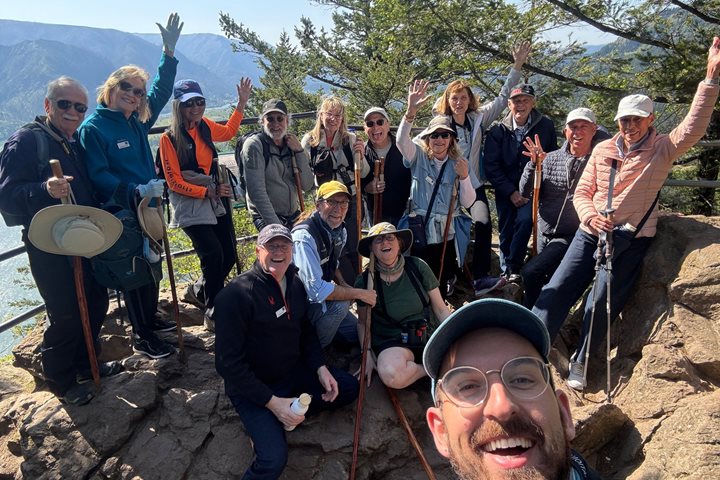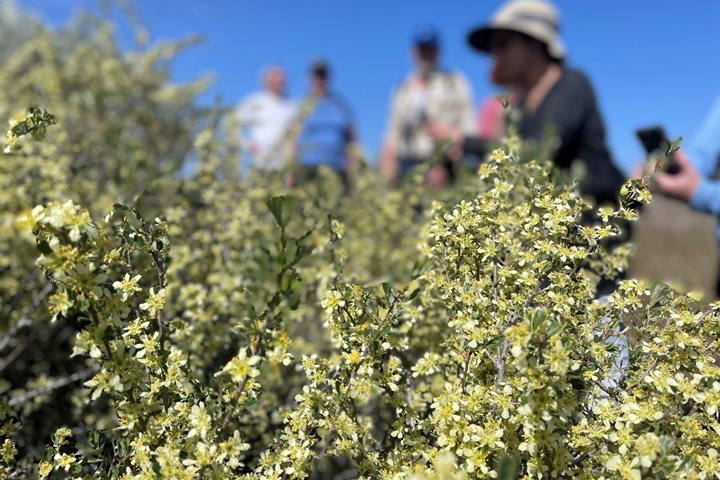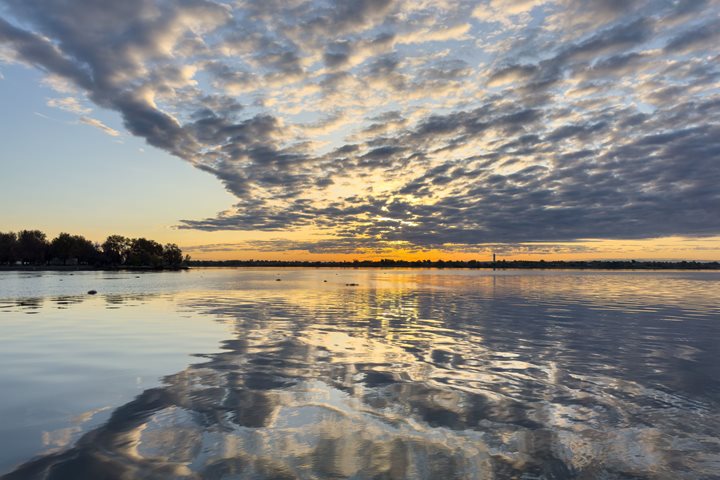As the morning rain fell in the majestic Snake River Basin, National Geographic Sea Lion meandered its way upriver transiting Ice Harbor and Monumental Dam and Locks.
Guests aboard passed the infamous Ship Rock, noted by Clark in his journal entry on October 14, 1805: “a remarkable rock verry large and resembling the hill [hull] of a Ship,” later renamed Monumental Rock.
Approaching Monumental Dam and Lock, guests were treated to an opportunity to enter the locks by either ship or Zodiac. Those aboard the latter were awed by the enormous concrete walls and the power of a hundred-foot lift, finishing with a reclining gate upstream.
Emerging from the locks, dramatic channel scablands carved out by Missoula Floods over 15,000 years ago dominated the river canyon landscape. Surrounded by evidence of historic floods, guests were given an expert presentation by National Geographic Field Geologist Kirt Kempter on the formation of channel scablands created by the Missoula Floods.
After lunch, Duke Alumni traveled by Zodiac to Lyon’s Ferry State Park where they continued by coach to Palouse Falls, an impressive waterfall dropping more than 200 feet across the channeled scabland of the Palouse River Canyon.
Meanwhile, more guests cruised up the Palouse River on Zodiacs, traveling past the Marmes Rock Shelter – an archeology site dating back 12,000 years – while looking for golden eagles, beavers, mule deer, and coots. Guests saw a porcupine in a tree, mule deer on the breaks, and a bald eagle soaring across the mouth of the river.
The day was bookended with a lively recap, featuring songs celebrating the Missoula Floods and a dinner menu derived from food eaten by Lewis and Clark and the Corps of Discovery.







